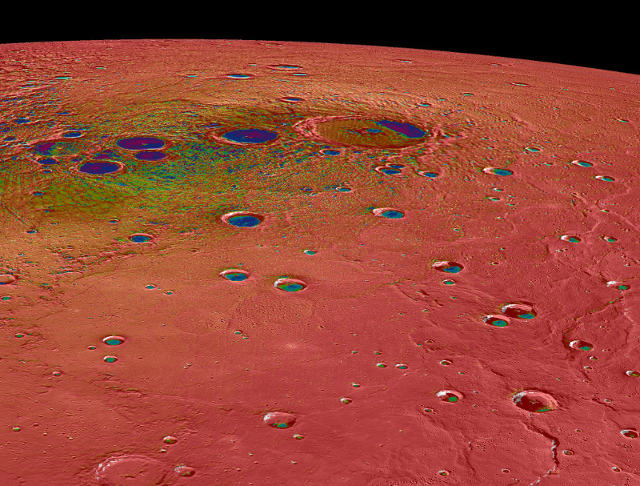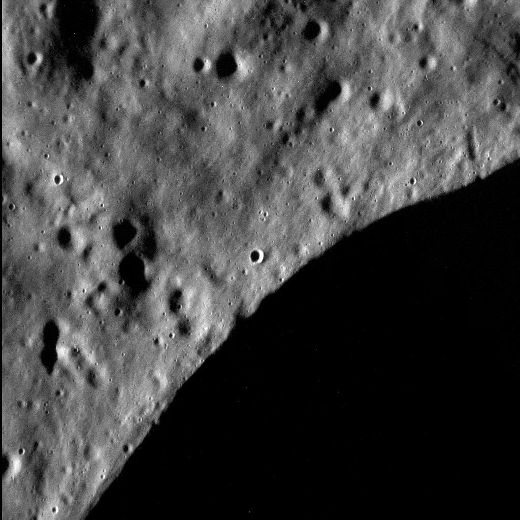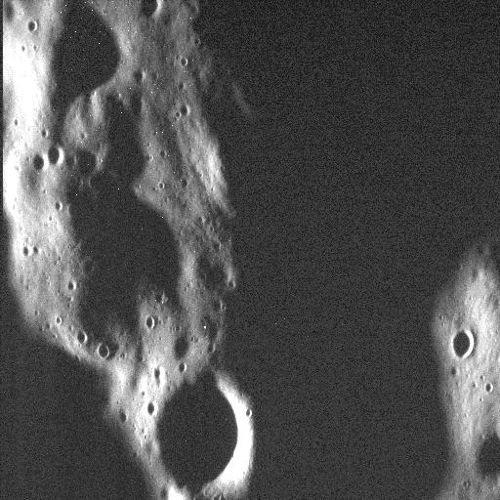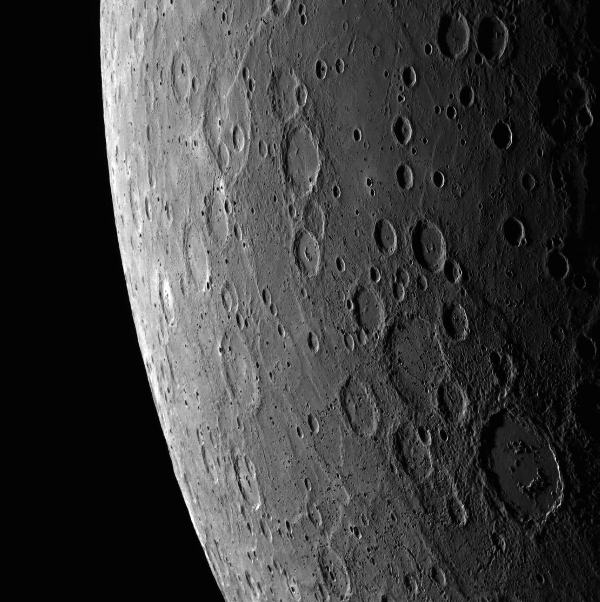
This view of Mercury’s north polar region shows the drastic range of temperatures that are seen at the Solar System’s innermost planet. The red areas are greater than 400 K (127° Celsius) while the purple areas are about 50 k (-223° Celsius). While the extremely hot areas seem easy to fathom, the craters near Mercury’s poles have regions that remain permanently in shadow, and in these regions even the maximum temperatures can be extremely low. This picture was taken by the MESSENGER spacecraft using its Mercury Dual Imaging System (MDIS). The Prokofiev crater is the largest one in this picture and can be seen near the top center of the image. It has a diameter of 112 km and can have temperatures below 100 K (-173° clesius) with stable water ice.



